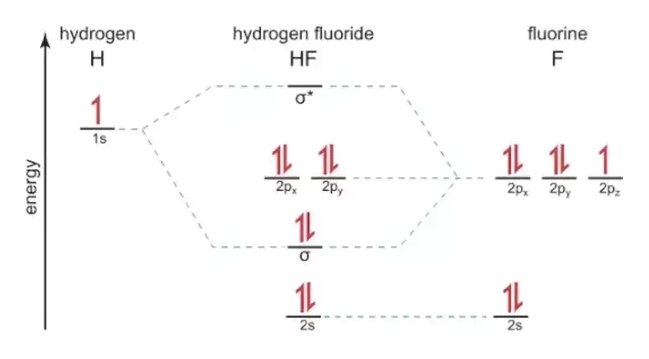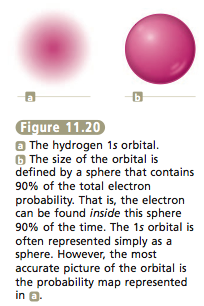

These one- electron functions used to construct the many-electron wave function are called atomic orbitals. In the most commonly utilized approximation, the many-electron wave functions are written in terms of products of one- electron wave functions similar to the solutions obtained for the hydrogen atom.

Following is a qualitative description of the nature of some of the hydrogen atomic orbitals. These orbitals differ in energy, size, and shape, and exact mathematical descriptions for each are possible. There are several discrete atomic orbitals available to the electron of a hydrogen atom. Nevertheless, C-H bonds involving sp- hybridized carbon are shorter than those involving i /t - hybridized carbon, and those with - hybridized carbon are the longest.

There is a similar effect in the length of C-H bonds, but this is less dramatic, primarily because the hydrogen atomic orbital involved (1 ) is considerably smaller than any of the hybrid orbitals we are considering. Figure 16-10 shows the spatial arrangement implied by assuming persistence of the hydrogen atom orbitals after bonding. In NH and NFS, three p orbitals are involved in the bonding. Furthermore, it will be necessary to find an explanation for the occurrence of eight-electron differences both at neon and at argon and eighteen-electron differences both at krypton and at xenon. It was necessary to multiply n2 by two-an important factor that could not have been anticipated. The hydrogen atom orbitals give us the numbers 2, 8, 18, and 32-the numbers we find separating the specially stable electron populations of the inert gases. Although Slater-type orbitals (STOs) are preferred on fundamental grounds (e.g., as demonstrated in Appendices A and B, the hydrogen atom orbitals are of this form and the exact solution of the many- electron Schrodinger equation can be shown to be of this form (in each of its coordinates) near the nuclear centers), STOs are used primarily for atomic and linear-molecule calculations because the multi-center integrals (each. Since each term in the hamiltonian depends either on the radial coordinate r or on the angular coordinates 0 and ( ), the total wavefunction can be factorized into a product of a radial part, R f), that depends only on the nucleus-electron distance, and an angular part, 5(0, ( )), that depends only on angular coordinates įor both types of orbitals, the coordinates r, 0, and (j) refer to the position of the electron relative to a set of axes attached to the center on which the basis orbital is located. Įquation 3.25 is transformed from cartesian to polar coordinates, so that electronic states are described by wavefunctions ilf(r, 0, ( )). The conceptual framework of the procedure is as follows. The solution of equation 3.25 requires a few pages of algebra and will not be given in detail here. The s are the allowed electronic energies, and the corresponding wavefunctions give the probability of finding the electron at any point in space. With minor adjustments, the same result holds when the system consists of two masses oscillating about their center of mass, like two atoms joined by a chemical bond which is a spring with force constant equal to k (see Chapter 2). The Schrodinger equation for such a system is the same as that for the hydrogen atom Other atoms with only a single electron (He+, Li2+, etc.) are known as hydrogen-like atoms.

So the Schrodinger equation for the hydrogen atom is įor an s orbital the angular part of the wave function is constant Ī plot of the angular function of 0 against the value of 9 in a plane through the z axis has the form of a plot of cos 9 and consists of two circles with a node in a line along the x axis The potential energy of the electron is given by V = e2l(x2 + y2 + z2)l/2, where (x2 + y2 + z2)l/2 is the radial distance from the nucleus. To obtain the Hamiltonian operator for this three-dimensional system, we must replace the operator d2/dx2 by the partial differential operator The simplest atomic system that we can consider is the hydrogen atom.


 0 kommentar(er)
0 kommentar(er)
